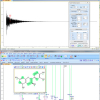A.N. Davies
Professor of Analytical Science, SERC, University of Glamorgan, UK,
Director, Analytical Laboratory Informatics Solutions
Introduction
Time for a good whinge (“complain persistently and in a peevish or irritating way”—Oxford Dictionaries Online) and to get a little controversial. Having had a year to look at the resources available to us to help educate our budding spectroscopists, I have been disappointed that much of the educational resources available online appear incomplete or outdated. For a generation of students brought up in schools with interactive whiteboards, good quality spectroscopic teaching materials of this nature are almost non-existent.
Of course, there are islands of innovation at some centres of learning but, as a community, I think we have a long way to go to catch up with—for example—the biological sciences.
The Royal Society of Chemistry has some content hosted by universities linked from their website, but it is not much more than a series of topic-specific videos which, whilst being better than nothing, are constructed in a very bland manner.
Some of the publishers have put together websites with educationally oriented content but it is challenging to navigate some of these sites and often at the end of an odyssey of link clicking you end up with simply a PDF with the associated additional costs to view. What I have enjoyed is the provisional of presentations along with the textbooks when they are deemed recommended reading for a particular course. These often contain the more complicated diagrammes required for teaching spectroscopy, but again not all publishers have created these resources for their text books.
The good, the bad and the ugly
One area which I really enjoyed recently was a presentation on the resources assembled around specific text books on the WileyPlus “online teaching and learning environment” https://edugen.wiley.com/edugen/secure/index.uni. Unfortunately here again although there are a number of chemistry textbooks available spectroscopy is notably absent.
The Intute system developed by several universities has interesting tutorials in their Virtual Training Suite on how to access and assess the validity of resources in around 63 topic areas. The Internet Chemist tutorial is currently on its third edition and has been developed by Alan Neville and John Blunden-Ellis of the John Rylands University Library at the University of Manchester (Figure 1). If you have an hour to spare, I would recommend investing it here. There is an especially nice piece of functionality on this website that I personally have only come across for the first time “save interesting links to your basket”. This is of particular use to students or those accessing this resource from shared public-access computers as the links saved are exportable so you can create your own bookmarks file or you can email them to yourself to create your own personalised learning resource.

There is a brief question and answer session on the use of the internet as a resource for students in their work.
So going back to the main pages of the Intute and following the links to the Physical Sciences resource area, I decided to look at what they have decided are good internet resources for Spectroscopy.
With Google hitting their “50,000 or more” limit for the same search, the Intute engine yielded 446 hits using the basic form (490 when I didn’t restrict to Physical Sciences) but these can again be reduced using the advanced search options. I wanted to look for Tutorials so I selected these in the advanced options and was rather surprised to now get 3686 hits... before I realised that my original filter of Spectroscopy and Physical Sciences had not been carried over to the advanced search options. So adding Spectroscopy again to the search string, de-selecting “All Subjects” narrowed my search down some more to only 81 hits.
This seemed a reasonable number so I started hunting through the links for useable content. Unfortunately, many of the sites are extremely basic despite some interesting and amusing language...
“But now, thanks to the amazing Fourier Transform Algorithm, you can hit the molecule with every frequency of IR light at once, and get a perfect spectrum in only a fraction of the time! WOW! In case you are curious, here is that amazing Fourier Transform Algorithm...”
Or
“To fully understand NMR spectroscopy, one must first shrink down to subatomic size and take a look at the nucleus. I’ll give you a second to get down to size... Are you tiny yet? Good!”
OK I probably shouldn’t make fun of our colleagues at the Department of Polymer Science at the University of Southern Mississippi but I was somewhat curious as to which level the texts seemed to be aimed at. Maybe I am the one who needs to learn something here!
As you make your way down the list of internet resources we have available it soon becomes clear that there is little interactive content available. The use of JMOL at least makes the molecular structure display more alive but the vast majority of the pages available are basic HTML renditions of paper book or handout material.
Some of the instrument vendors have good tutorial materials at a basic level, but these can result in somewhat sales-oriented application descriptions that are limited by the capabilities of their own systems (not a criticism as obviously that is what commercial company websites are designed for). Generally, their graphics are better, navigation often easier with some good video content.
The DoITPoMS website of the “Dissemination of IT for the Promotion of Materials Science” has a limited amount of interesting interactive Raman spectroscopy content, but it is well hidden.
Unfortunately, there are many sites that seem to promise much “Flash demonstrations and Rollover Drills” or “Hypermedia” only to find that it is indeed often much hype with dead links and missing graphics files. These are not limited to sites developed by smaller colleges but also sites run out of our larger most prestigious universities.
So time to pose a question, am I the only one who finds this situation embarrassing?
Again, we are looking for feedback. I would be very happy to publicise any examples of good web-based content that you are developing and maybe we can look to getting Spectroscopy Europe to maintain, through this column, a resource list where we make sure that the content actually exists and current.
But do we need to go further? The interactive learning content which I would like to be able to present doesn’t seem to be being generated in our field, even though you would think that spectroscopy would certainly lend itself to more imaginative interactive learning materials. Do we have, as a community, too many isolated innovators who we need to bring together?


Still one of the most useful resources available for showing students the relationships between chemical structures and their spectra is the JSpecView work by Robert Lancashire and his students at the University of the West Indies, Mona Campus in Jamaica. His latest student has been keeping up their excellent reputation for innovation by looking at integrating the java spectroscopy applets and 3D spectrometer imagery into a virtual laboratory world and some of this work is now used as a teaching aid in their practical classes. See http://wwwchem.uwimona.edu.jm/WL/
Conclusions
Finally, I would like to appeal to you for feedback on this topic. And also to bring you up to date. The Intute initiative seems to have fallen foul of the funding crisis, and maybe of a lack of publicity being libraries-based. It will be maintained for the coming academic year, but its future beyond this date is uncertain. Have a play with the resources available and let me know if you have ideas for saving and maintaining the content.














